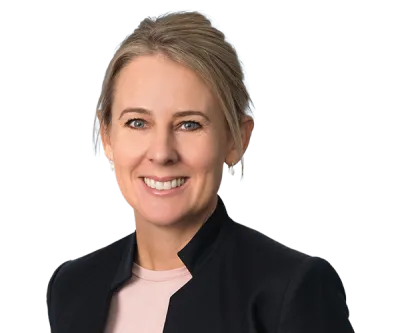
Trustees - finding certainty in uncertain times
Those facing the most uncertainty, and risks of claims, may well be trustees of trusts that hold speculative or high-risk assets including investments in small business start-ups, private equity or venture capital funds, and technology companies - or with significant interests in industries (such as retail, tourism, or aviation) – all of which anticipate facing spectacular losses. Liability for such losses will fall for consideration before too long, and it is important for trustees to be aware of how best to respond (and to protect themselves) when questions are asked, and claims directed to the trustees, in respect of those losses.
A trusteeship is of course a fiduciary relationship and trustees are bound to act bona fide in their dealings with the trust and to exercise care and skill in their judgment including by acting in the best interests of the beneficiaries. It is allegations based on breaches of those duties that are likely to increase given the present climate. However, in most cases, such claims may be effectively mitigated in reliance on protections incorporated into trust deeds and contract or, if necessary, with the assistance of the Grand Court of the Cayman Islands (the Court). Both categories of solutions are discussed further below.
Protections in the trust deed
Well-drafted trust deeds include a variety of provisions aimed at addressing risks trustees might otherwise bear personally. These fall into two broad categories; those that limit a trustee's powers and duties, and those which limit a trustee’s liability for breach and loss to the trust fund. Outside of these inbuilt protections, trustees routinely rely on limitation of liability clauses when contracting with third parties, and in appropriate circumstances actively seek releases and indemnities from beneficiaries in respect of any future claims.
In terms of duty-limiting provisions:
- The most common provision of this nature is what is known as an anti-Bartlett[1] provision, which limits a trustee's duty to be involved in the management of companies held by the trust (such that the trustee cannot subsequently be held liable for any mismanagement of the companies in which it does not have a duty to involve itself). The use of these provisions has been in the spotlight recently in the DBS Bank[2] litigation, in which the Hong Kong Court of Final Appeal confirmed that the anti-Bartlett provision under consideration in that case operated so that that the trustee did not owe any residual duty to supervise the operations of the companies underlying the trust. This case is unlikely to be the last word on anti-Bartlett clauses, but nonetheless confirms that the protection afforded to a trustee will depend upon the precise wording of the provision (which can vary widely from case to case). Trustees therefore need to be aware of the limits of the anti-Bartlett clauses contained in the deeds for each of the trusts they administer, something which is crucial when assets are underperforming.
- Trustees of reserved powers trusts will generally have less exposure to liability in that the settlor is more likely to have retained certain elements of control and decision-making, including as to investments. By way of explanation, sections 14 and 15 of Cayman’s Trusts Law (2020 Revision) provides that (i) the reservation of wide ranging powers to a person other than the trustee, including the power to direct the trustee in connection with the purchase, holding or sale of trust property[3], shall not invalidate the trust and, importantly, (ii) a trustee which acts in compliance with a direction shall not be acting in breach of trust. With the liability for decision making (and risk) in respect of investment decisions reserved to someone other than the trustee, the trustee’s liability is greatly reduced.
- Through the incorporation of 'special companies' underlying the trust, the responsibility for management and decision-making in respect of the investment of trust assets may also have been transferred to an entity other than the trustee. In those circumstances, and as provided for in the trust deed itself, the trust assets will have been transferred to a special company and the trustee will likely do no more than hold the shares in the nominated company, with the directors of the special company responsible for the investment of the assets. This can be particularly effective for trading businesses and assets like superyachts where a trustee does not have the experience or risk appetite for managing those assets itself, and the arrangement has the effect of greatly reducing the trustee’s ultimate liability.
Where the above protections or mechanisms do not exist in the trust deed or the trust structure, there will nonetheless likely be other provisions on which the trustee can rely to minimise its liability. In particular:
- Nearly all trust deeds contain an exoneration provision (also called an exculpation or limitation of liability provision) which usually operate to limit a trustee's liability save for that resulting from the trustee's own gross negligence, wilful default or fraud. The precise drafting can and does vary widely from trust to trust, leading to differences in the protection such clauses confer on trustees. As with anti-Bartlett clauses, it is therefore critical that trustees are aware of how each provision is framed and its limits.
- When contracting in its capacity as trustee of a trust, a prudent trustee will have requested the insertion of a provision that records that the trustee's liability is limited to the trust assets in its possession from time to time. If well-drafted, effect of the provision will be that the trustee will not be personally responsible for any liability that exceeds the value of the trust assets – as is presently the default position at common law in the Cayman Islands.
- Trustees may also be able to obtain releases and indemnities from beneficiaries, pursuant to which the beneficiaries confirm that they will not sue the trustee in respect of some action taken (or to be taken) by the trustee (and/or will indemnify the trustee for any losses suffered by the trustee in taking that action). While commonly used in practice, the true value of these particular tools may differ from case to case depending on the particular circumstances in which they have been negotiated.
Court intervention
When the drafting protections above do not provide sufficient comfort or conclusions, it may become necessary to seek more robust protection from the Court. The ways in which the Court can assist are many and varied but some of the most applicable to trustees in times of financial distress are set out below.
"Blessing" applications
The trustee's most widely utilised tool, an application for a blessing of the Court under Public Trustee v Cooper[4] "Category 2" jurisdiction protects a trustee from subsequent claims by beneficiaries when it makes a 'momentous' decision. If given, the blessing of the Court will usually also authorise the trustee to meet the costs of the application from the assets of the trust. In difficult financial times, the Court's sanction of significant decisions such a restructuring of the trust, refinancing, a global mitigation strategy or asset sales at a loss, will be of immense assistance (and relief) to a trustee.
Surrender of discretion
Occasionally a Category 2 'blessing' application will not be possible because the trustee cannot confidently take a decision at all. The trustee may find itself in a position where there is a conflict of some type, such as where one beneficiary supports a proposal put forward by the trustee and another has said it will sue the trustee if it adopts the proposal. In those circumstances, a trustee may need to consider a surrender of its discretion (a "Category 3" application) in a similar way to the trustee in the recent HSBC v Tan Poh Lee & Ors[5] case. The effect is to allow the Court to exercise the trustee's discretion thus protecting the trustee from the consequences (and costs) of that decision. As some beneficiaries do not see eye to eye even in the calmest of times, the likelihood of these types of situations arising in times of financial distress is acute and this option can also be of great assistance to a trustee.
Insolvent trusts – Z Trusts duties
Where a trust is considered to have become insolvent[6], the trustee will owe its fiduciary duties primarily to creditors of the trust ahead of the beneficiaries and it must therefore proceed very cautiously. Judgments arising out of the Z Trusts litigation in Jersey[7] suggest that where a trust is insolvent the direction of the local court should be sought in relation to the future administration of the trust. In times of financial difficulty, it is possible for a trust to move from a position of solvency to insolvency in a very short space of time (for example where the trust is invested heavily in energy stocks which have recently seen their value evaporate in a matter of days). As such, trustees would be well advised to keep a close eye on assets within the trust, and the liquidity available, and to act quickly and with the assistance of the Court where issues of solvency arise.
Conclusion
While tumultuous market conditions can make life difficult for trustees, it is not all doom and gloom. In reliance on protections built into the trust deed, negotiated limitations and indemnities, and with the assistance and guidance of the Court, the trustee’s exposure to claims and to liability – and doubt as to the appropriateness of its actions – can be greatly reduced.
--------------------------
[1] Bartlett v Barclays Bank [1980] Ch 515; [1980] 2 W.L.R. 430.
[2] Zhang Hong Li and others v DBS Bank (Hong Kong) Ltd and others [2019] HKCFA 45.
[3] It is worth noting that section 14(1)(e) of the Trusts Law does not expressly extend to borrowing. Given the very wide nature of the powers that can be reserved, the reservation of a power to direct the trustee as to borrowing should not invalidate the trust or prevent the trustee from being protected for acting in accordance with such a direction; however this remains untested in the Cayman Court.
[4] [2001] W.T.L.R. 901.
[5] In the matter of HSBC International Trustee Limited v Tan Poh Lee and Ors – FSD 175 of 2019 (IKJ).
[6] This is a description which is commonly recognised to be something of a misnomer, given a trust is not a separate legal entity and cannot be considered insolvent in its own right.
[7] While not yet considered here, these judgments are likely to be considered persuasive in Cayman.
An original version of the article was first published by STEP Journal Plus, June 2020.
© Carey Olsen 2020.





